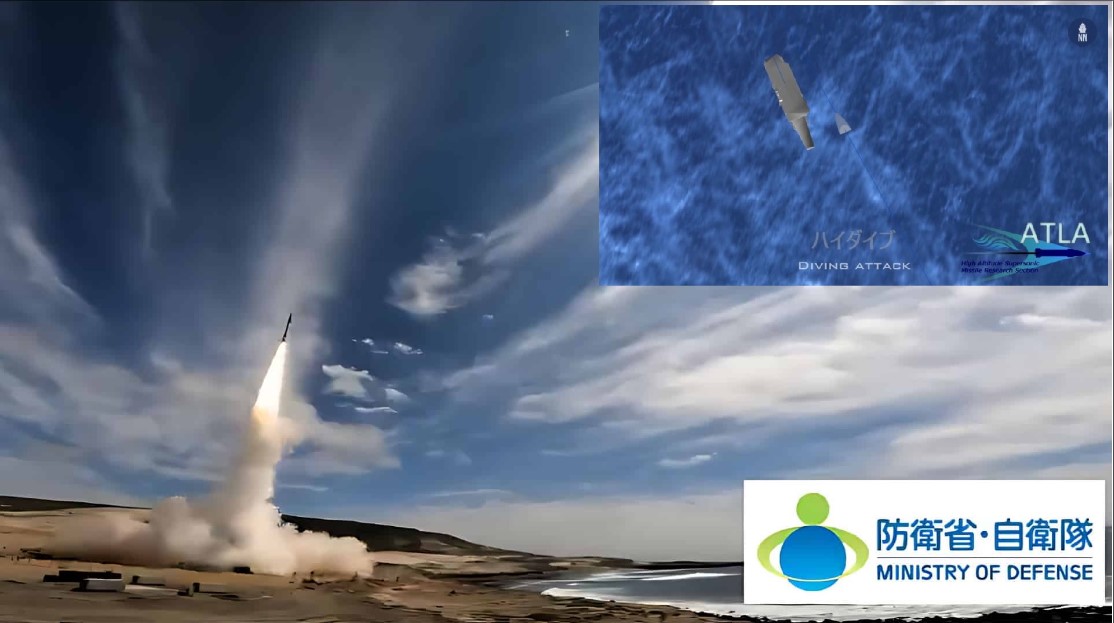Japan Tests Hyper Velocity Gliding Projectile

Japan's defense landscape is on the cusp of a significant transformation with the development of the Hyper Velocity Gliding Projectile (HVGP). This cutting-edge weapon, set to be deployed by the Japan Ground Self-Defense Force (JGSDF) starting in the fiscal year 2026, represents a major advancement in military technology and strategy.
The HVGP is specifically designed for "island defense" roles, reflecting Japan's strategic priorities in a region marked by increasing military threats. The hypersonic weapon is launched from a truck-mounted booster, after which the warhead separates and glides towards its target with remarkable speed and precision. The estimated range of this formidable weapon is approximately 900 kilometers, making it a significant asset in Japan's defense arsenal.
A crucial test of the HVGP was conducted on March 23, 2024, in California, USA. This test, captured in footage released by Japan's Acquisition, Technology & Logistics Agency (ATLA), aimed to verify the measurement systems for future launch tests. The successful execution of this test marks a pivotal step in the weapon's development journey.
The inception of the HVGP project dates back to the fiscal year 2018, with the goal of completing development by 2025. However, escalating military threats from China and North Korea prompted Japan to accelerate the process, initiating early mass production in the fiscal year 2023, even before the completion of development. Mitsubishi Heavy Industries (MHI), a prominent player in Japan's defense sector, is spearheading the manufacturing of this advanced weapon.
In a bid to ensure rapid deployment, the HVGP is being developed in incremental capability enhancements. The recent test focused on the most basic "Early Deployment Version (Block 1)" test projectile. Looking ahead, Japan plans to develop an "Enhanced Capability Version (Block 2A)" with an extended range of up to 2,000 kilometers, and a "Block 2B" version capable of reaching targets 3,000 kilometers away. These advanced versions are slated for completion in the fiscal years 2027 and 2030, respectively.
The HVGP's potential extends beyond land-based targets. Future enhanced versions of the projectile could have anti-ship capabilities, posing a significant threat to aircraft carriers and other naval assets. This consideration is part of Japan's broader research efforts aimed at enhancing the HVGP's versatility and effectiveness in various combat scenarios.
As Japan continues to navigate a complex security environment, the HVGP stands out as a testament to the country's commitment to bolstering its defense capabilities. The weapon's development underscores Japan's proactive approach to addressing regional threats and maintaining stability in the Asia-Pacific region.
The successful development and deployment of the HVGP will not only enhance Japan's military readiness but also serve as a significant deterrent against potential aggressors. With each test and technological breakthrough, Japan moves closer to achieving a robust and resilient defense posture, ensuring the safety and security of its territories.
In the broader context of global defense dynamics, Japan's HVGP represents a noteworthy advancement in hypersonic weaponry. As other nations also invest in similar technologies, the HVGP highlights the accelerating pace of military innovation and the critical importance of staying ahead in the ever-evolving landscape of defense technology.
For a glimpse into the future of Japan's defense capabilities, one need only look at the HVGP – a symbol of technological prowess and strategic foresight.


